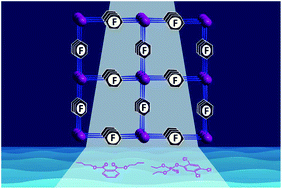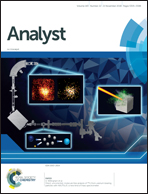A highly hydrolytically stable lanthanide organic framework as a sensitive luminescent probe for DBP and chlorpyrifos detection†
Abstract
Organic pollutants have attracted increasing attention due to their strong persistence and extensive diffusivity. Plasticizers (PAEs) and organophosphorus pesticides (OPs), as the vital part of organic pollutants, have made extensive damage to the environment with the rapid development of modern agriculture and industry. Therefore, we have, for the first time, carried out a quantitative analysis of the PAEs and OPs by fluorescence recognition. A series of isostructural lanthanide organic frameworks, [Ln(tftpa)1.5(2,2′-bpy)(H2O)] (Ln = Gd 1, Eu 2 and Tb 3, H2tftpa = tetrafluoroterephthalic acid), were hydrothermally synthesized, of which 3 exhibited excellent hydrolytic resistance to both boiling acidic and basic aqueous solutions. Moreover, luminescence investigations show that 3 can be used as a highly sensitive and recyclable luminescence sensor for the detection of DBP (di-n-butyl phthalate) in simulated seawater and chlorpyrifos in ethanol with the detection limits of 2.07 and 0.14 ppb, respectively.



 Please wait while we load your content...
Please wait while we load your content...